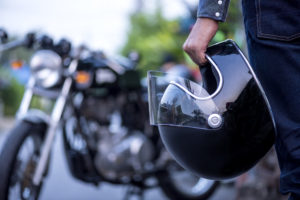A Utah couple will get another trial after the defense attorney made an inappropriate reference to the McDonald’s coffee case during closing argument in their first trial. John Boyle was struck in a grocery store parking lot cross walk by a truck driven by Kerry Christensen. The injuries he sustained led to back surgery and chronic pain that limited his ability to work in his profession and to golf, his passion as a former pro golfer. He and his wife, Norrine, filed suit to recover for his injuries and his reduced income potential. Mr. Christensen admitted liability for the accident, but the case went to trial on the issue of damages.
During her closing argument, Kristin VanOrman of local insurance defense firm Strong & Hanni, referred to the McDonald’s coffee case for the first time. She also misrepresented the facts of the case by indicating that the Boyles were trying to calculate their damages with the same method used in Stella Liebeck’s case against McDonald’s. The Boyle’s counsel immediately objected that there was no evidence of the details of that case before the jury and any reference to it was prejudicial. The judge noted the objection, but overruled it. The jury awarded $62,500, rather than the $458,725 requested by the Boyles. The Boyles appealed.
In an opinion authored by Christine Durham, Chief Justice of the Utah Supreme Court, the high court determined that the reference to McDonald’s coffee case was inappropriate (and inaccurate) and warrants reversal. In other words, a new trial for the Boyles, a rare remedy in civil cases because the standard is that "absent the improper argument, there was a reasonable likelihood of an outcome more favorable to the" complaining party. Chief Justice Durham noted:
Granting a new trial is an extreme remedy that we do not provide lightly, but, for the reasons described below, we agree with Mr. Boyle that the reference here was both improper and reasonably likely to prejudice the jury, thus warranting reversal.
The primary text of the detailed analysis she provided is:
We grant both sides “considerable latitude in their closing arguments. . . . to fully discuss from their perspective the evidence and all inferences and deductions it supports.” “Latitude does not extend to counsel calling the jury’s attention to material that the jury would not be justified in considering in its verdict.” For example, comments meant to inflame passion or prejudice in the jury would be improper because they divert the jury from its duty to base its verdict on the evidence presented.
Here, during closing argument, Mr. Christensen’s counsel referred to Mr. Boyle’s requested pain and suffering damages and said the following:
Ladies and gentlemen, they want a lot of money for this. A lot of money. What’s been written on the board is called a per diem analysis. . . . How many days has it been since the accident? How many days for the rest of his life. And how much per day is that worth? That’s what’s been done here. That’s how we get verdicts like in the McDonald’s case with a cup of coffee.
Mr. Boyle’s counsel immediately objected that the reference to this case was “prejudicial and . . . not in evidence.” His objection was noted but overruled.
Before we analyze this statement, it may be useful to explain the cultural context of the McDonald’s coffee case, more formally known as Liebeck v. McDonald’s Restaurants, P.T.S., Inc. Few cases have ever achieved as much notoriety among the general public of this country as the McDonald’s coffee case, fueled by its wide-ranging and repeated publicity in national and local news media. It has been mocked in extremely popular entertainment television, including The Tonight Show, The Late Show, and Seinfeld. It has been debated on talk shows, parodied in television commercials, mentioned in congressional debates, and is firmly lodged in the public consciousness. “What made the headlines and what is most commonly recalled by the general populace about the . . . case is the size of the verdict and the source of the injury—$2.9 million for spilled coffee.” In U.S. popular culture, the case has come to symbolize greedy plaintiffs and lawyers who file frivolous lawsuits and win hugely excessive sums in a broken legal system.
Although the public view of the case is understandable when limited to a superficial view of its facts, a deeper look at the details and issues in the case may dramatically alter one’s perspective. Among the many relevant facts generally missing from the public consciousness are the following:
The temperature of the spilled coffee was so hot—180 to 190 degrees—that within seconds it caused third-degree burns that extended through the skin to the fat, muscle or bone on Ms. Liebeck’s thighs, buttocks and groin area. She was hospitalized for eight days, underwent skin grafts, was disabled for two years following the accident, and was permanently disfigured with scars on over 16 percent of her body.
The jury heard evidence that McDonald’s had received approximately 700 other complaints about coffee-burn injuries in the previous decade (some of which were settled for a total outlay of over $500,000), but considered the number of injuries statistically insignificant and therefore did not lower the temperature of its coffee.
The jury awarded $2.7 million in punitive damages because it believed the extreme temperature of the coffee was unreasonably dangerous and that McDonald’s had callously disregarded the danger even after hundreds of injuries. The $2.7 million figure was based on the approximate revenues from just two days of McDonald’s coffee sales.
Given the uniquely iconic nature of this case, the passion it has produced in the media, and the general misunderstanding of the totality of its facts and reasoning among the public, we find it hard to imagine a scenario where it would be proper for a party’s counsel to refer to it before a jury. Generally, as here, such a reference would seem to have the sole purpose of recalling the public outrage over isolated elements of the case—thus improperly appealing to a jury’s passions. It is not the jury’s job to make legal determinations, so no legal arguments from the case are relevant. The facts in the McDonald’s coffee case were not in evidence before this jury and were also utterly irrelevant. Indeed, the one attempt counsel made to make her reference seem relevant was a misrepresentation because the high punitive damages award in the McDonald’s coffee case had nothing to do with a per diem analysis. It is certainly unfair to require the other party to clarify all the misconceptions about this irrelevant case in the limited time allotted for closing argument. The great latitude provided in closing arguments regards reasonable inferences about evidence properly before the jury and does not extend to misrepresentations or efforts to appeal to a jury’s passions. Thus the reference to the McDonald’s coffee case in closing argument was improper.
The entire Boyle opinion can be found here.
The Liebeck case has been the most often shot "frivolous lawsuit" and "lawsuit abuse" arrow from the quiver of tort reformers. They perpetuate the myth ad infinitum without regard to the real facts to further their agenda of promoting corporate interests over those of the injured. In an effort to shed light on the myths of the Liebeck case and tort reform in general, producer and director Susan Saladoff premiered her film Hot Coffee at the 2011 Sundance Film Festival. It is a must see.

Bret Hanna of Wrona DuBois in Utah, focuses exclusively on litigating plaintiffs’ medical malpractice and catastrophic personal injury cases. He has represented clients in state and federal courts, in mediations, and in administrative proceedings in Michigan and Utah since 1991.










Comments for this article are closed.